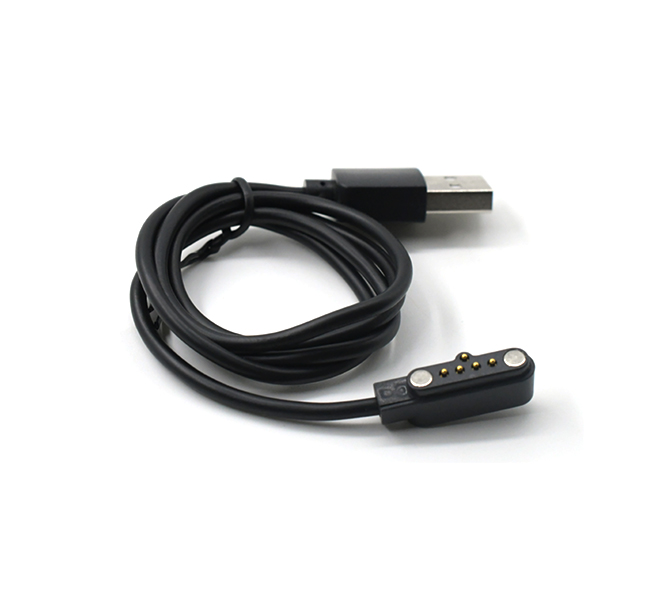Time:2025-08-19 Views:1 source:News

SMT (Surface Mount Technology) soldering Pogo Pin bases are specialized mounting structures designed to integrate Pogo Pins—spring-loaded electrical connectors—into surface-mount printed circuit boards (PCBs), enabling reliable temporary or semi-permanent electrical connections in compact electronic devices. Unlike through-hole alternatives, SMT Pogo Pin bases attach directly to the PCB’s surface via solder paste, eliminating the need for drilled holes and making them ideal for miniaturized products like smartphones, wearables, IoT sensors, and portable medical devices where space is at a premium.
The design of SMT Pogo Pin bases prioritizes compactness and mechanical stability to withstand the rigors of SMT assembly and long-term use. Typically constructed from high-temperature thermoplastics (e.g., LCP—Liquid Crystal Polymer—or PPS—Polyphenylene Sulfide) or metal alloys (e.g., brass with nickel plating), these bases feature precision-molded or machined cavities that securely hold the Pogo Pin in place. The base’s bottom surface includes solder pads (often made of copper with tin-lead or lead-free solder finishes) that align with corresponding pads on the PCB. During SMT assembly, the base is placed on the PCB using a pick-and-place machine, and solder paste is reflowed in an oven (at temperatures ranging from 220°C to 260°C for lead-free solder) to create a strong, conductive bond. This process ensures the base remains firmly attached to the PCB, even in devices subjected to vibration (e.g., automotive electronics) or temperature cycles (-40°C to 85°C for consumer devices).
A key advantage of SMT Pogo Pin bases is their design flexibility, which allows for customization of pin spacing (pitch), pin count, and orientation to match specific PCB layouts. For example, a wearable fitness tracker may use a 2-pin SMT Pogo Pin base with a 2mm pitch for charging and data transfer, while a medical sensor device could integrate a 6-pin base with a 1.27mm pitch to connect to multiple sensors. Additionally, SMT bases can be designed with features like polarization tabs (to prevent reverse insertion) or alignment notches (to ensure accurate placement during assembly), reducing the risk of assembly errors.
Electrical performance is another critical consideration for SMT Pogo Pin bases. The base must maintain a consistent electrical path between the Pogo Pin and the PCB, with low contact resistance (typically <50 milliohms) to minimize signal loss. To achieve this, the base’s internal contacts are often plated with gold (5-30 microinches thick) or nickel, which enhances conductivity and resists corrosion. The base also acts as an insulator, preventing short circuits between adjacent Pins—its dielectric material must have a high breakdown voltage (e.g., >250V AC) and low dielectric loss to ensure signal integrity, especially in high-frequency applications (e.g., 5G devices or RF modules).
Quality control for SMT Pogo Pin bases involves rigorous testing at multiple stages. Dimensional inspections using optical coordinate measuring machines (CMMs) verify that the base’s solder pads, pin cavities, and overall dimensions meet tolerances of ±0.05mm, ensuring compatibility with PCBs and Pogo Pins. Solderability testing (per IPC standards) confirms that the base’s solder pads wet properly during reflow, forming strong joints. Mechanical testing, such as vibration and shock tests, validates the base’s ability to retain the Pogo Pin under stress, while environmental testing (humidity, temperature cycling) ensures long-term reliability.
In practical applications, SMT Pogo Pin bases enable seamless connectivity in compact devices. For example, a smartphone’s wireless charging coil may use an SMT Pogo Pin base to connect to the main PCB, allowing for easy assembly and reliable power transfer. In IoT sensors, SMT bases with Pogo Pins facilitate temporary programming or calibration of the device without permanent soldering, simplifying manufacturing and maintenance. By combining space-saving design, reliable soldering, and customizable features, SMT Pogo Pin bases are essential components in modern miniaturized electronics.
Read recommendations:
National standard charging seat with cable
Efficient production of Magnetic PogoPin with High - Current Capacity